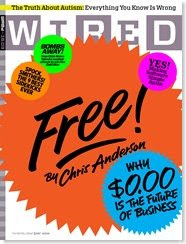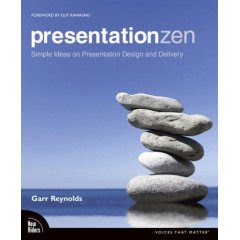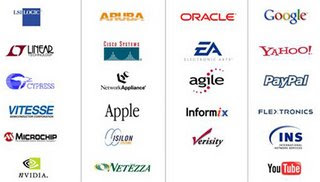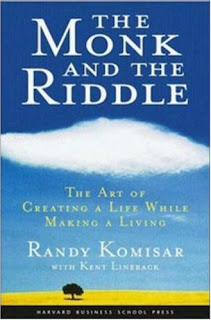Converse Domaination from Ross Martin on Vimeo.
Wednesday, September 8, 2010
Using the Google Platform in Innovative ways to Inexpensively Build a Brand
Saturday, March 14, 2009
Global Heroes: Economist Special Report Entrepreneurship in these Troubled Times
Wednesday, February 25, 2009
The essence of the credit crises that is crippling the economy
The Crisis of Credit Visualized from Jonathan Jarvis on Vimeo.
Saturday, February 21, 2009
Marc Andreessen (Netscape Founder) on Charlie Rose - GREAT INTERVIEW
Wednesday, November 5, 2008
Entrepreneurial Lessons from the Obama Campaign
 Barack Obama's victory in the US presidential race is nothing if not entrepreneurial. He used innovation, communication and genuine passion to take on the establishment (and win). Here are some of the entreprenerial lessons from the Obama campaign:
Barack Obama's victory in the US presidential race is nothing if not entrepreneurial. He used innovation, communication and genuine passion to take on the establishment (and win). Here are some of the entreprenerial lessons from the Obama campaign:- Don't be scared to take on the establishment
- Build a purpose and brand that people can believe in
- Establish support from the ground up - one supporter at a time - as compared to working from the top down
- Leverage technology (for communication and for collecting resources)
- Build your financial resource base as you go - not all at once but inline with the momentum you create
- Establish meaningful associations - Biden, Oprah, Buffett etc - who will speak for you when you cant
- Follow through and persevere - even when others are trying to pull you down

Friday, October 31, 2008
Trend Questions
A few weeks back they asked people to email them trend-related questions. They have just released the aggregated Top 15 Trend Questions (and Answers).
Top 15 Trend Questions (and Answers) with links to the answers:
* Q15: “How do I spot and apply trends?”
* Q14: “What are good trend resources?”
* Q13: “What will be the next Facebook or Google?”
* Q12: “What’s next for
* Q10: "What trends are affecting
* Q9: “How do I know a trend isn’t just a fad?”
* Q8: “When is the right time to act on a trend?”
* Q7: “What are the trends in
* Q6: “Who sets trends?”
* Q5: “How do I become a (better) trend watcher?”
* Q4: “How much influence do trend watchers have?”
* Q3: “What is a trend’s life cycle?”
* Q2: “What’s going to be big in 2009?”
* Q1: “How is the financial crisis going to impact my business?”
Friday, September 5, 2008
brand YOU!
Thursday, August 28, 2008
No Capital, No Collateral, No Problem
Here are the slides from the presentation. Enjoy.
Wednesday, July 9, 2008
The Business Planning Paradox
World's Best Presentation Contest
Tuesday, May 13, 2008
Business the South African Way :)
Three contractors - one from Lenasia , another from Pretoria , and the third from Benoni - are bidding to fix a broken fence at the Union Buildings in Pretoria .
They go with a Union Buildings official to examine the fence.
The Pretoria contractor takes out a tape measure, does some measuring, and then works some figures with a pencil. "Well," he says, "I figure the job will run about R900: R400 for materials, R400 for my crew, and R100 profit for me."
The Benoni contractor also does some measuring and figuring, then says, "I can do this job for R700: R300 for materials, R300 for my crew, and R100 profit for me."
The Lenasia contractor doesn't measure or figure, but leans over to the Union Buildings brother and whispers, "R2,700."
The official, incredulous, says, "You didn't even measure like the other guys! How did you come up with such a high figure?"
The Lenasia contractor whispers back, "R1000 for me, R1000 for you, and we hire the guy from Benoni to fix the fence."
"Done!" replies the government official.
Thanks to William McIlree for passing this on (it made me laugh)
Monday, May 12, 2008
Principles of High Perfomance
11 PRINCIPLES that high performing athletes tend to live by. The more I read through them the more I thought that they are even more relevant for an entrepreneur than a triathlete -- so whether you are a triathlete or and entrepreneur -- I reckon that these principles are valuable and important:
 1. Learning over ignorance
1. Learning over ignorance2. Simplicity over complexity
3. Proficiency over incompetence
4. Excellence over mediocrity
5. Process over results
6. Progress over deterioration
7. Decisiveness over vacillation
8. Balance over extremism
9. Efficiency over wastefulness
10. Confidence over self doubt
11. Humility over arrogance
Wednesday, April 9, 2008
What's your pitch?


How do you know if your new idea is worth anything?
Will people buy?
Could I get funding?
How do I find prospective partners?
Pitching the next great idea to prospective business partners, investors, service providers and fellow entrepreneurs just got easier with Vator.tv—a new venture that combines online video and networking. Based on the proverbial elevator pitch—the notion that you should be able to sum up a new business venture in the few minutes it takes to ride an elevator—Vator.tv is an online marketplace for new ideas. “Anyone, across all industries, at any stage, can share ideas, products, services and businesses with the rest of the world, mainly through video.”
Here's how it works: you sign up for a free account. You then create pitches for your ideas, projects or businesses in a rich media environment by uploading video, images, PPT or PDF files. You can choose to share their pitches with a personal network or with the entire Vator.tv community. You can build your network by inviting friends to join or browsing through other ideas and connecting with like-minded people on the site. The website includes tips on creating compelling pitches, such as how to pack the most punch into a three-minute video clip.
Vator.tv’s revenue will likely stem from advertising and sponsorships. Launched in June 2007, Vator.tv has some big names behind it, including angel investors Peter Thiel, co-founder of PayPal, Richard Rosenblatt, former Chairman of MySpace, and Georges Harik, a former Google executive who helped build Google's AdSense technology. What's more, the company is already putting its money where it's mouth is by hiring a Pakistani group of web developers who won the business through their very own video pitch. Another promising application of video technology in a Web 2.0 environment, Vator.tv is one for entrepreneurs and investors to keep their eyes on.
Pitch your idea on Vator.tv and see how many stars you earn.....
Saturday, March 29, 2008
SlideShare = COOL tool
 I have recently discovered SlideShare -- a website that allows you to:
I have recently discovered SlideShare -- a website that allows you to:1. Share your slide shows with others
2. View really cool slide shows posted by others
3. Link up wit others based on similar interests in the slide shows on the website.
If you like (1) cool slides, (2) to stay at the cutting edge of thinking in a particular area or (3) to link up with others with similar interests then slide share may be worth a look.
If you want to check out some of my presentations -- here is one on "my top 10 basic business principles" -- simple but hopefully powerful:
Wednesday, March 26, 2008
Its for FREE - so how do make money???
 Chris Anderson, the author of my book of the year in 2006: The Long Tail, has recently written a great feature in Wired magazine on the power of FREE!!! He has created a useful taxonomy for a new kind of business model in which some aspects of the offering are given away for nothing. Giving things away for FREE makes it really easy to appeal to consumers to use your product BUT even though the end users get something for free, someone in the economic ecosystem is making money -- in some cases loads of money. The different models Anderson lists are:
Chris Anderson, the author of my book of the year in 2006: The Long Tail, has recently written a great feature in Wired magazine on the power of FREE!!! He has created a useful taxonomy for a new kind of business model in which some aspects of the offering are given away for nothing. Giving things away for FREE makes it really easy to appeal to consumers to use your product BUT even though the end users get something for free, someone in the economic ecosystem is making money -- in some cases loads of money. The different models Anderson lists are:The freemium. Basic versions of products (such as software) are given away for free, while premiums and upgrades are offered for a price. The reason that works is that the cost of providing the basic version is pretty low, and the profits made on the upgraded version are substantial. Examples of this model that have recently sucked me into buying the upgraded version of a service or product for a premium price after using the free version include:
Linked in – the online business networking tool
PB wiki – the service that enables you to create and host wiki websites (I use as course portals for all the courses that I teach).
Survey Monkey – the online data gathering service that enables you to set up an online quiz or questionnaire.
Advertising. This is probably the best known of the ‘free’ models and has formed the basis for many traditional industries, from newspapers to television. Where advertising dollars go now, however, has been subject to radical change, which in turn has dramatically shifted the economic underpinnings of many industries, while creating great wealth for others. The core idea is that advertisers will pay to get your attention, regardless of the ‘free’ offerings you actually came to consume. Think gmail, magazine websites: Entrepreneur mag etc, and well-visited blogs: Guy Kawasaki or Seth Godin.
Cross-subsidies. These are the traditional loss-leaders well known to retailers. The idea here is that you give away one product (or portion of a product) in the pursuit of charging higher prices on others. Offers in the supermarket that loose money, low-priced CD’s at Wal-Mart or Happy Hour drinks at the local pub are all provided to get you to actually buy the more expensive offers (the CD player at Wal-Mart or the food at the pub). The key assumption in this model is customers actually are open to cross-purchasing which is not always the case – with the internet making it far easier to “shop around” customers may be very specific about what they purchase where.

Zero marginal cost. Software distributed over the web and digital music would fall into this category. While there is a cost to create the initial offer, the cost of distributing it broadly is very low. Sometimes, the free good is actually a come-on for another item. For instance, while it may be impossible for a singer to limit the distribution of songs in digital form, they may actually make their money on concert sales (a variant on the cross-subsidy idea). Many open-source software businesses are established on this model – they give the software away and then charge for a manual or a service to assist in effectively using the software tool.
Labor Exchange. In this model, marketers offer you something for free in exchange for your providing information or assistance to them. Anderson uses the example of Google providing ‘free’ directory assistance because they can use the calls to improve their voice-recognition technology, potentially opening the way to a huge market down the road.
Gift economy. In this model, things are given away for free out of altruism or because people simply enjoy doing the work required to create the goods. The classic examples here would also be some open-source software and Wikipedia entries. People voluntarily create and consume the free good.
I think this is a really cool feature that adds a whole new dimension to understanding business models and appreciating how to make money on and an off the web.
For more info and responses – link to Chris Anderson's blog entry on the topic or check out the article in Wired: Free! Why $0.00 Is the Future of Business
Monday, March 24, 2008
The Beauty of Good PowerPoint - PresentationZEN
 A few years back Garr Reynolds made it his mission in life to save us from a certain slow painful death from boring corporate PowerPoint. He launched a really cool, insightful and relevant blog called Presentation Zen. He has now followed this up with a SUPERB book by the same name: PRESENTATION ZEN. If you expect to develop or deliver a slide presentation in the next 12 months then you have to read this book.
A few years back Garr Reynolds made it his mission in life to save us from a certain slow painful death from boring corporate PowerPoint. He launched a really cool, insightful and relevant blog called Presentation Zen. He has now followed this up with a SUPERB book by the same name: PRESENTATION ZEN. If you expect to develop or deliver a slide presentation in the next 12 months then you have to read this book.Things I love about the book:

The book highlights fundamental design principles in an easy to understand way -- even a boring accountant (like me) can get what Garr is saying.
Garr uses many before and after examples of slides to illustrate the principles he introduces.
Garr draws on the thinking of many other insightful authors such as Dan Pink - A Whole New Mind, Chip and Dan Heath - Make to Stick and Ben Zander - The Art of Possibility.
The forward by Guy Kawasaki - all done in slides - is super cool.
Garr Reynolds did the entire design and layout for the book himself.
The book touches on all aspects of presentation - preparation, design, development and delivery.
Garr shares web resources for cool pictures
The book includes examples of good presentations for a whole range of topics from other other presenters
It is a GREAT book that will transform your view on design and enable you to create and deliver top quality presentations.
Saturday, January 26, 2008
Entrepreneur Mag New Website
 Entrepreneur Magazine (by far the best magazine focused on new business development in South Africa) have recently launched a new, upgraded website. It is RICH with VALUABLE resources for anyone wanting to launch or grow a business.
Entrepreneur Magazine (by far the best magazine focused on new business development in South Africa) have recently launched a new, upgraded website. It is RICH with VALUABLE resources for anyone wanting to launch or grow a business.You can link to some of my recent feature articles from Entrepreneur mag through the website. So if you are struggling with (1) writing a business plan (2) raising capital (3) measuring performance in your business (4) a fear of failure then some of the these resources may be of use to you.
Check out these articles:
How to Write a Business Plan – Step-by-Step
Entrepreneur's comprehensive five-step guide to writing a knock-out business plan.
No Capital, No Collateral, No Problem
Don't let a lack of cash sabotage your start-up or growth plans. Turn sense to rands and bootstrap your business to get going.
Made to Measure
Driving a powerful new car without instruments to give you feedback on its performance can be equated to setting up a promising new business and not measuring and reporting back on its performance. Too many business owners find themselves in this position.
Road Map for Business Survival
It happens to the smallest companies and the largest corporations. a time when crisis strikes so hard it threatens their very existence and puts the character and resilience of leadership to the ultimate test. In this special report, Entrepreneur showcases companies that faced a crisis and lived to tell the tale. Plus the real life account of a corporate success that turned into tragedy
Thursday, January 24, 2008
Facebook = Opportunity for Entrepreneurs
 On 24 May 2007 Facebook opened up their platform to 3rd party developers. This means that for the past 7 months coders and entrepreneurs have been able to create new applications for Facebook. This has resulted in over 14000 new applications -- some of them are useless and will soon die while other applications are really useful to those of us that use Facebook. For example I love the books application -- I am able to load up a record of all the books I have read, am currently reading and still want to read. I am able to write reviews for the books I have read and I get book recommendations (via Amazon) from based on my reading history. In isolation this application has limited power but as I get to see the book reviews and recommendations of some of my friends on Facebook so I get ideas for new books I would like to read and to comment on other peoples reading preferences. It is like an ongoing book club meeting with my best friends (minus the wine and gossip that usually goes with most book club get together). This application may not appeal to everybody but for me -- an avid reader -- it is really cool.
On 24 May 2007 Facebook opened up their platform to 3rd party developers. This means that for the past 7 months coders and entrepreneurs have been able to create new applications for Facebook. This has resulted in over 14000 new applications -- some of them are useless and will soon die while other applications are really useful to those of us that use Facebook. For example I love the books application -- I am able to load up a record of all the books I have read, am currently reading and still want to read. I am able to write reviews for the books I have read and I get book recommendations (via Amazon) from based on my reading history. In isolation this application has limited power but as I get to see the book reviews and recommendations of some of my friends on Facebook so I get ideas for new books I would like to read and to comment on other peoples reading preferences. It is like an ongoing book club meeting with my best friends (minus the wine and gossip that usually goes with most book club get together). This application may not appeal to everybody but for me -- an avid reader -- it is really cool.The developers of the books application make money through commissions on books that are sold on Amazon.com via their Facebook application. They get access to a huge user base (Facebook is the 5th most popular website in the USA), I get access to great book recommendations and an insight into what my friends are reading and Facebook have more users spending time on their site as more and more useful applications are added by third party developers (and this results in more targeted advertising revenue for them)
The underlying message here: there is a new economy developing dubbed "THE FACEBOOK ECONOMY". This economy offers excellent opportunities for entrepreneurs from anywhere in the world to to create applications and access a large user base via the internet in order to generate previously ignored revenue streams.
For more on THE FACEBOOK ECONOMY see the recently released Knowledge@Wharton article entitled: "Scrabulous and the New Social Operating System: How Facebook Gave Birth to an Industry"

Tuesday, January 15, 2008
Calling all Web Entrepreneurs - Collecting Data For Business Model Research
 HELP!!!
HELP!!!I am doing some exciting research project on business model development in web-based entrepreneurial businesses. If you are a CEO and/or founder of web-based business that was launched in the last 5 years then you are invited to PLEASE participate in the initial data gathering process for this research project.
Click on the following link to contribute to this research:
http://www.surveymonkey.com/s
The survey takes no more than 10 minutes to complete and every person who participates will be given access to regular updates on the findings from this research project.
If you are not the founder of a web-based business but you know an entrepreneur who has founded a web-based business in the past 5 years, please forward this posting to them.
Wednesday, December 19, 2007
Wow-ing an Audience with your new Idea
Here is a video of Steve Jobs introducing the iPod - watch this for some lessons on how to get an audience juiced.
Steve Jobs introducing the iPod
Some the the lessons from Steve Jobs in pitching a new product or business idea:
- Keep it simple - both the slides and the message should be clear and simple
- Clearly identify the benefits of the product or service and repeat them often
- Have something tangible to show the audience - a prototype, a demonstration or anything else that brings the idea to life
- Love what you selling - if you don't love it others will hate it
- Keep it short - very few people pay more attention as time passes, most are less and less attentive over time so a short high impact presentation is best.
Tuesday, December 11, 2007
Communicating your Idea

Formatting
VC's like business plans that present a lot of information in as few words as possible. The following format, within 15-20 slides, is all that’s needed:
Company Purpose
Define the company/business in a single declarative sentence.
Problem
Describe the pain of the customer (or the customer’s customer).
Outline how the customer addresses the issue today.
Solution
Demonstrate your company’s value proposition to make the customer’s life better.
Show where your product physically sits.
Provide use cases.
Why Now
Set-up the historical evolution of your category.
Define recent trends that make your solution possible.
Market Size
Identify/profile the customer you cater to.
Calculate the total market size (top down) and the size of the market you can reasonably capture and service (bottom up).
Competition
List competitors
List competitive advantages
Product
Product line-up (form factor, functionality, features, architecture, intellectual property).
Development roadmap.
Business Model
Revenue model
Pricing
Average account size and/or lifetime value
Sales & distribution modelCustomer/pipeline list
Team
Founders & Management
Board of Directors/Board of Advisors
Financials
P&L
Balance sheet
Cash flow
Cap table
The deal
The Sequoia Capital portfolio of investments includes some of the most successful technology companies of all times - these guys know what they doing, so when they put out some advice ...LISTEN!!!!

Saturday, December 8, 2007
Constructive Failure
Other useful resources from Randy Komisar include his book:

The Monk and the Riddle - Komisar takes the reader through a hypothetical Silicon Valley start-up, with an eager entrepreneur named Lenny trying to get funding for an online casket-selling business. As Komisar helps Lenny find the real purpose of the business, the passion behind the revenue projections, he reflects back on his life as an entrepreneur. Komisar emerges as a master storyteller, the kind of guy you'd feel honored to share a bottle of wine with. And you believe his conclusion: "When all is said and done, the journey is the reward." It's great if you've made billions on the journey, but the important thing is that you do something you can truly throw yourself into.
Entrepreneurial Crisis
When that happens there are some things that you can do to respond in an appropriate way, here are 9 things that can assist when facing a crisis. Some of them are pretty obvious, but many entrepreneurs forget them in their moment of panic:
Step 1: Acknowledge the problem
No problem can be solved if we don’t admit we have got a problem. Pride, false hope and blind desperation often prevent us from openly admitting and acknowledging we have a problem and this in turn prevents us from discussing the problem with others, asking for help and putting a plan together for recovery. You have to be courageous and clever enough to admit when you have a problem.
Step 2: Measure the damage
Measuring the damage often requires a deep dive into the reality of the situation. This may involve painful phone calls to customers, investors or suppliers to find out exactly where you stand with them. Get all the facts down on paper so that you have crystal clear picture of where the business is at.
Step 3: Identify the cause
Measuring the damage in step two will highlight the symptoms of the sick business but it may not highlight the root cause. Challenge your self to go deep and be vigilant in looking for the cause. Dealing with surface level issues won’t solve the problem in the long term.

Step 4: Reframe your management/business philosophy
Einstein said that the definition of stupidity is doing the same thing in the same way and expecting a different outcome. If you don’t want the same outcome you need to decide what needs to change about how you are managing the business to deal with the cause of the problem.
Step 5: Create a bold but realistic plan
A plan creates hope and promise by translating the changed management philosophy into actionable steps. The actionable steps can be assigned to people within the business so that the hard work of a turnaround effort is shared amongst the management team. Construct a set of goals with specific tasks, assigned to specific people with specific deadlines if you want to increasing your chances on getting out a of a business crises situation.
Step 6: Sell the plan internally and externally
Communicate how you will enable a recovery to employees (internal stakeholders) and shareholders, suppliers and other external stakeholders. Use different mediums in getting your message across and make sure that people are able to understand what you are saying and what their role is in the recovery process.
Step 7: Execute ruthlessly
In the end it all comes down to what you actually do, not just what you plan to do. So you need to get down to action.
Step 8: Measure progress
Measure the success of all aspects of the business (financial, customer, people and process) in the recovery process so you can see if you are making progress. This will enable you to adjust your path where necessary and celebrate success where deserved (see last months feature article for ideas on measuring performance in a business – these concepts should be applied in a turnaround effort)
 Step 9: Celebrate and share success
Step 9: Celebrate and share successPeople are programmed to respond to rewards. Celebrating success enables a business to build positive momentum to get out of a bind.
Hold onto the words of Theodore Roosevelt “The credit belongs to the man who is actually in the arena; whose face is marred by dust and sweat and blood; who strives valiantly; who errs and comes short again and again; who knows the great enthusiasms, the great devotions, and spends himself in a worthy cause; who, at the best, knows in the end the triumph of high achievement; and who, at the worst, if he fails, at least fails while daring greatly, so that his
 place shall never be with those cold and timid souls who know neither victory nor defeat."
place shall never be with those cold and timid souls who know neither victory nor defeat."If you want to read a full feature article on this topic see the latest issue of the South African version of Entrepreneur Magazine
Wednesday, December 5, 2007
Is there a BUBBLE?? - Video
As an add-on to that post, this is a very funny, well executed and even informative video about some of the stuff currently going on in the technology funding and start-up space. Thanks Spratt for passing it on and well done to the guys who put this together ... the Richter Scales ...
Tuesday, November 27, 2007
Trends for 2008
I have always maintained that it is important for entrepreneurs and business leaders to be conscious of trends and changes in lifestyle and behavior that affect their industry in a direct or indirect way. Trends is is defined as follows:
One of the best websites for monitoring trends is tendwatching.com. They recently published: "8 TRENDS TO CAPITALIZE ON IN 2008" report. It is really worth taking the time to read this report if you want some insight into some of the ways consumers may think, act or respond in the year ahead. The report is filled with brilliant insights, great examples and cool pictures to illustrate ideas.
The 8 TRENDS TO CAPITALIZE ON IN 2008 are:

The brief idea behind each trend:
Status spheres - a variety of lifestyles, activities and persuasions, which can be mixed and matched by consumers looking for recognition from various crowds and scenes.
Pemiumization - no industry, no sector, no product will escape a premium version in the next 12 months.
Snack culture - he phenomenon of products, services and experiences becoming more temporary and transient; products that are being deconstructed in easier to digest, easier to afford bits, making it possible to collect even more experiences, as often as possible, in an even shorter time frame.
Online oxygen - control-craving consumers needing online access as much as they need oxygen.
Eco Iconic - Eco-friendly goods and services sporting bold, iconic design and markers, that help their eco-conscious owners to visibly tout their eco-credentials to peers.
Brand butlers - Think baby food or diaper brands opening a lounge area, including diaper-changing facilities and microwaves, for parents and their offspring at a major airport or in malls. Or a bank installing secure, high-tech lockers next to the beach, so beachgoers can safely store their belongings when going for a swim or walk.
Make it yourself (MIY) - having come to expect to be able to create anything they want as long as it is digital, and to customize and personalize many physical goods, the next frontier will be digitally designing products from scratch, then having them turned into real physical goods as well.
Crowd mining - when co-creating, co-funding, co-buying, co-designing, co-managing *anything* with 'crowds', the emphasis in 2008 will move from just getting the masses in, to mining those crowds for the rough and polished diamonds. How to do that? Shower them with love, respect and heaps of money, of course.
For all those taking a break in December, read this before you go as it will fuel your mind to consider out-the-box ideas as to how you could leverage off these trends for business success in 2008.
Here's how understanding trends may help:
- Vision—Do these trends have the potential to influence or shape your company's vision?
- New business concepts—Can these trends point you to new business concepts, or entirely new ventures?
- New products, services, experiences—Can these trends inspire you to add 'something' new for a certain customer segment?
- Marketing, advertising, PR—Will these trends help you speak the language of those consumers that are already 'living' a trend?

